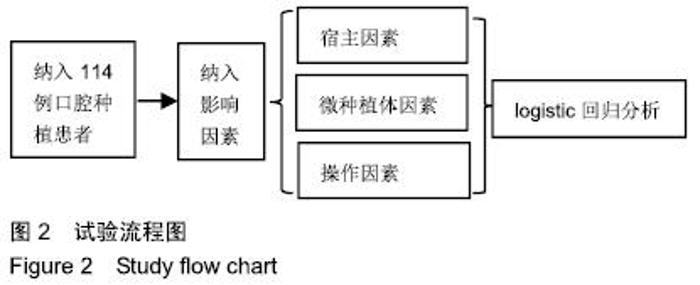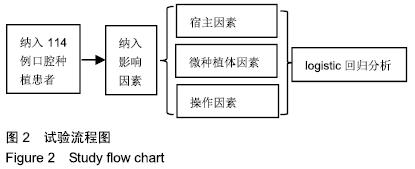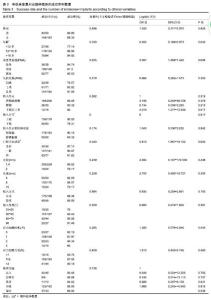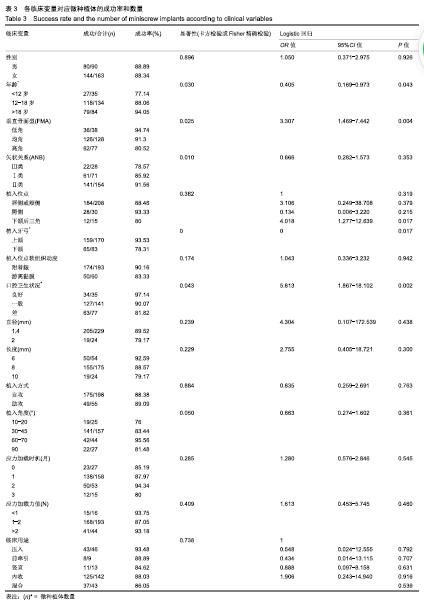[1] BUSER D, SENNERBY L, DE BRUYN H.Modern implant dentistry based on osseointegration: 50 years of progress, current trends and open questions.Periodontol 2000.2017;73(1):7-21.
[2] VAN VELZEN FJ, OFEC R, Schulten EA, et al.10-year survival rate and the incidence of peri-implant disease of 374 titanium dental implants with a SLA surface: a prospective cohort study in 177 fully and partially edentulous patients.Clin Oral Implants Res. 2015; 26(10):1121-1128.
[3] LEO M, CERRONI L, PASQUANTONIO G, et al.Temporary anchorage devices (TADs) in orthodontics: review of the factors that influence the clinical success rate of the mini-implants.Clin Ter.2016;167(3): e70-77.
[4] NOSOUHIAN S, RISMANCHIAN M, SABZIAN R, et al.A mini-review on the effect of mini-implants on contemporary orthodontic science. J Int Oral Health.2015;7(Suppl 1):83-87.
[5] AFRASHTEHFAR KI.Patient and miniscrew implant factors influence the success of orthodontic miniscrew implants.Evid Based Dent. 2016;17(4):109-110.
[6] 吴也可,赵立星,郜然然.植入角度对微种植体稳定性的影响[J].口腔医学研究,2019,35(2):172-175.
[7] 吴也可,赵立星.持续或间断应力加载下正畸微种植体稳定性的组织形态学和生物力学分析[J].口腔医学研究,2016,32(4):326-330.
[8] XU Z, ZHAO L, WU Y, et al.Histomorphometric and biomechanical analyses of the osseointegration of loaded orthodontic microscrews inserted at different cortical bone thickness sites.Oral Surg Oral Med Oral Pathol Oral Radiol Endod. 2014;118(2):157-165.
[9] ZHANG Q, ZHAO L, WU Y, et al The effect of varying healing times on orthodontic mini-implant stability: A microscopic computerized tomographic and biomechanical analysis. Oral Surg Oral Med Oral Pathol Oral Radiol Endod.2011;112(4):423-429.
[10] ATASSI F, AWARTANI F. Oral hygiene status among orthodontic patients.J Contemp Dent Pract.2010;11(4):E025-032.
[11] URIBE F, MEHR R, MATHUR A, et al.Failure rates of mini-implants placed in the infrazygomatic region. Prog Orthod.2015;16:31.
[12] PARANHOS LR, BENEDICTO EN, NUNES MF, et al.Correlation of different cephalometric measurements to define facial type.Int J Orthod Milwaukee.2012;23(1):31-37.
[13] LI H, ZHANG H, SMALES RJ, et al.Effect of 3 vertical facial patterns on alveolar bone quality at selected miniscrew implant sites.Implant Dent.2014;23(1):92-97.
[14] MOHAMMED H, WAFAIE K, RIZK MZ, et al.Role of anatomical sites and correlated risk factors on the survival of orthodontic miniscrew implants: a systematic review and meta-analysis. Prog Orthod.2018;19(1):36.
[15] HONG SB, KUSNOTO B, KIM EJ, et al.Prognostic factors associated with the success rates of posterior orthodontic miniscrew implants: A subgroup meta-analysis.Korean J Orthod. 2016;46(2):111-126.
[16] PAPAGEORGIOU SN, ZOGAKIS IP, PAPADOPOULOS MA. Failure rates and associated risk factors of orthodontic miniscrew implants: a meta-analysis.Am J Orthod Dentofacial Orthop. 2012; 142(5): 577-595.e7.
[17] ZHANG Q, ZHAO L, WU Y, et al.The effect of varying healing times on orthodontic mini-implant stability: A microscopic computerized tomographic and biomechanical analysis. Oral Surg Oral Med Oral Pathol Oral Radiol Endod.2011;112(4):423-429.
[18] DEGUCHI T, YABUUCHI T, HASEGAWA M, et al. Histomorphometric evaluation of cortical bone thickness surrounding miniscrew for orthodontic anchorage.Clin Implant Dent Relat Res. 2011;13(3): 197-205.
[19] CHANG C, LIU SS, ROBERTS WE. Primary failure rate for 1680 extra-alveolar mandibular buccal shelf mini-screws placed in movable mucosa or attached gingiva.Angle Orthod. 2015;85(6): 905-910.
[20] HOSEIN YK, SMITH A, DUNNING CE, et al.Insertion Torques of Self-Drilling Mini-Implants in Simulated Mandibular Bone: Assessment of Potential for Implant Fracture.Int J Oral Maxillofac Implants 2016;31(3):e57-64.
[21] ALHARBI F, ALMUZIAN M, BEARN D.Miniscrews failure rate in orthodontics: systematic review and meta-analysis.Eur J Orthod. 2018;40(5):519-530.
[22] WANG Z, ZHAO Z, XUE J, et al.Pullout strength of miniscrews placed in anterior mandibles of adult and adolescent dogs: A microcomputed tomographic analysis.Am J Orthod Dentofacial Orthop.2010;137(1):100-107.
[23] VILLELA HM, VEDOVELLO FILHO M, VALDRIGHI HC, et al. Evaluation of miniscrew angulation in the posterior maxilla using cone-beam computed tomographic image. Dental Press J Orthod. 2018; 23(1):46-55.
[24] MIGLIORATI M, DRAGO S, DALESSANDRI D, et al.On the stability efficiency of anchorage self-tapping screws: Ex vivo experiments on miniscrew implants used in orthodontics. J Mech Behav Biomed Mater.2018;81:46-51.
[25] TOPOUZELIS N, TSAOUSOGLOU P.Clinical factors correlated with the success rate of miniscrews in orthodontic treatment.Int J Oral Sci. 2012;4(1):38-44.
[26] MOHAMMED H, WAFAIE K, RIZK MZ, et al.Role of anatomical sites and correlated risk factors on the survival of orthodontic miniscrew implants: a systematic review and meta-analysis.Prog Orthod. 2018;19(1):36.
|



